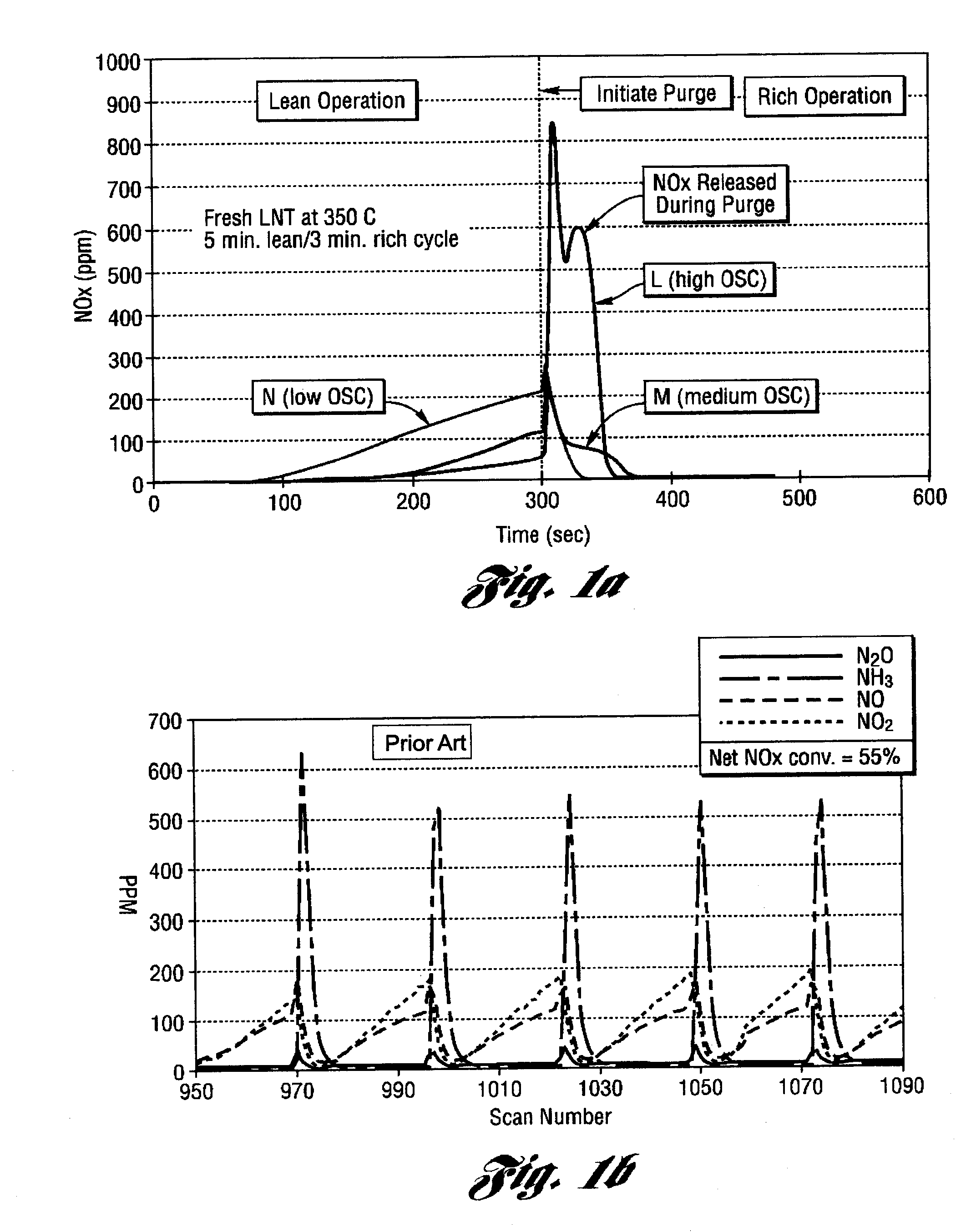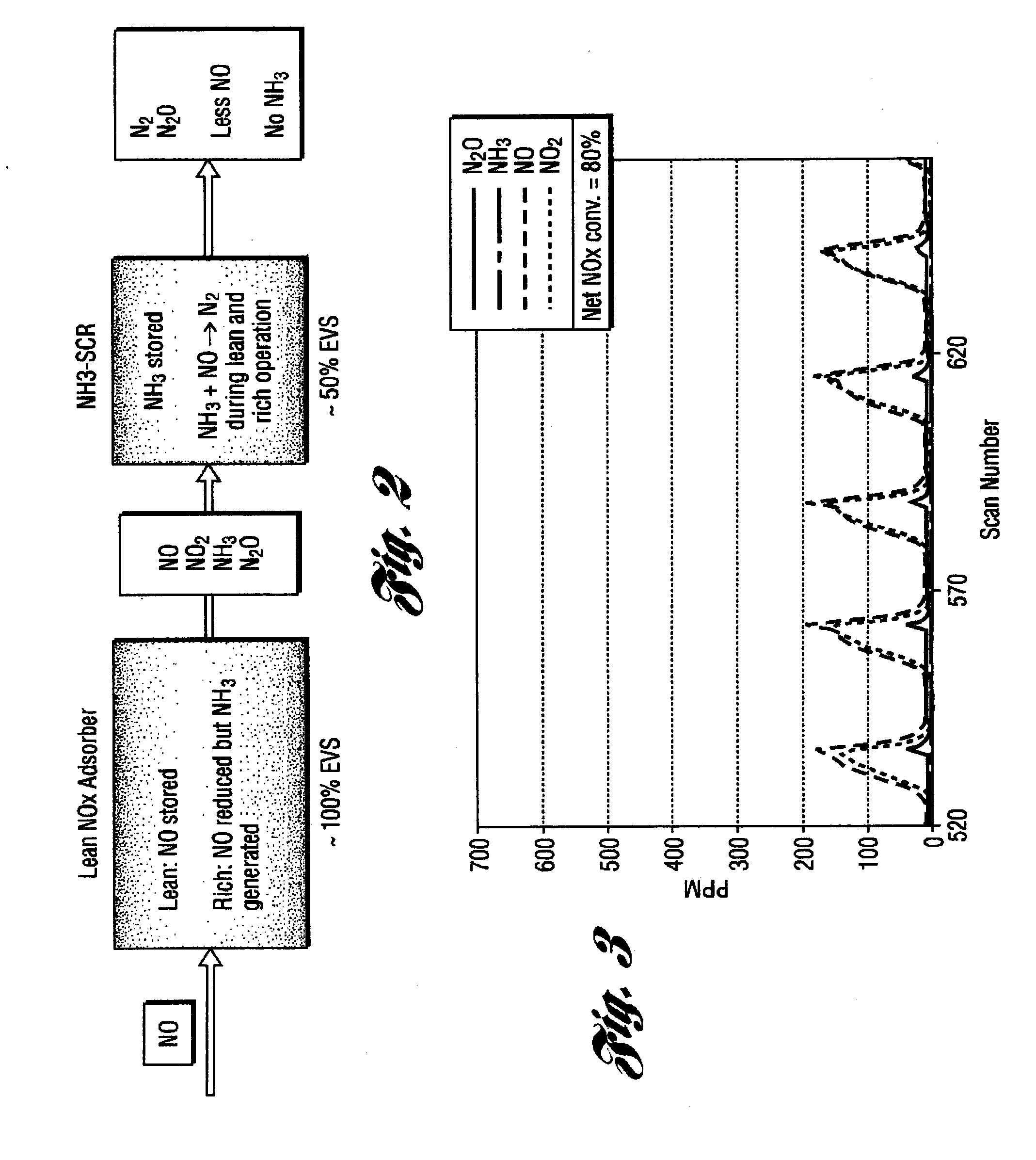Catalyst System for the Reduction of NOx and NH3 Emissions
- Summary
- Abstract
- Description
- Claims
- Application Information
AI Technical Summary
Benefits of technology
Problems solved by technology
Method used
Image
Examples
Embodiment Construction
)
[0027] In this invention, net NOx conversion is improved and ammonia emissions reduced through the use of a lean NOx trap and NH3-SCR catalyst system which operate together to produce and store ammonia and reduce NOx to nitrogen. In so doing, the catalyst system of the present invention solves three problems of lean NOx traps; namely, reducing NOx breakthrough, NOx spikes and ammonia emissions.
[0028] In order to meet increasingly stringent fuel economy standards, it is preferable to operate an automotive engine under lean conditions. However, while there is improvement in fuel economy, operating under lean conditions has increased the difficulty in reducing NOx emissions. As an example, for a traditional three-way catalyst, if the air / fuel ratio is lean even by a small amount, NOx conversion drops to low levels. With traditional three-way catalysts, the air / fuel ratio must be controlled carefully at stoichiometric conditions to maximize reduction of hydrocarbons, carbon monoxide a...
PUM
| Property | Measurement | Unit |
|---|---|---|
| Temperature | aaaaa | aaaaa |
Abstract
Description
Claims
Application Information
 Login to View More
Login to View More - R&D
- Intellectual Property
- Life Sciences
- Materials
- Tech Scout
- Unparalleled Data Quality
- Higher Quality Content
- 60% Fewer Hallucinations
Browse by: Latest US Patents, China's latest patents, Technical Efficacy Thesaurus, Application Domain, Technology Topic, Popular Technical Reports.
© 2025 PatSnap. All rights reserved.Legal|Privacy policy|Modern Slavery Act Transparency Statement|Sitemap|About US| Contact US: help@patsnap.com



